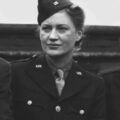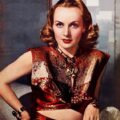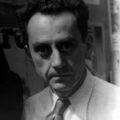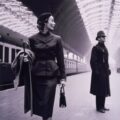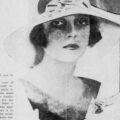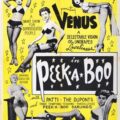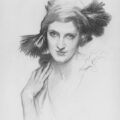George Hoyningen-Huene – Definitive Fashion Photographers
January 7, 2019George Hoyningen Huene was one of Vogue’s key fashion photographers of the Twenties and Thirties, producing striking, strongly composed images in black and white with clear, crisp shadows and high contrast chiaroscuro. Not for him the romantic fog of his predecessor at the job, Baron de Meyer. His work was modernist and his models active, often staring directly at the camera if they weren’t busy posing in studied, sculptural shapes or like dancers, archers, swimmers or acrobats. Even the people in his beach scenes aren’t languid and relaxed but look dynamically tensed for action.
Baron George Hoyningen Huene (September 4, 1900 – September 12, 1968) was born in St Petersberg, Russia, to Baron Theodor Hermann von Hoyningen Huene and Emily Anne Lothrop, known as Nan. His father, the Baron, was a nobleman and the chief equerry to Tsar Alexander III, and his mother was one of the daughters of the United States Minister Plenipotentiary and Envoy Extraordinary to the Russian court. Hoyningen Huene had two sisters, Helen and Elizabeth, whose nickname was Betty. It was a privileged life.
Russian Revolution
But, like many Russians of their position, the family was forced to flee during the Russian Revolution of 1917. Their properties were confiscated and George Hoyningen Huene found himself first in England. He did not want to let his life go without a fight, however, and when the Bristish tried to stage an intervention in the Russian civil war against the communists in 1918 he went with them. However, the effort was half hearted and doomed and quickly disbanded, so Hoyningen Huene went back to Britain along with the other Allied soldiers.
After that, though his mother and father settled in Britain, George Hoyningen Huene decided to go on to Paris. He enjoyed this cultured city, and supported himself at first with a series of odd jobs, including working as an extra in the early Paris film industry. He took night classes in painting and drawing with the cubist artist André Lohte. Hoyningen Huene loved the glamorous world of fashion, and as at that time there were far more fashion illustrators for magazines than photographers, he decided to turn his talents in that direction. It was a practical as well as artistic decision – good illustrators were extremely well paid.
George Hoyningen Huene – Fashion Sketches
His first work was fashion sketches for his sister Betty. She too had come to Paris and now ran a successful salon under the name of Yteb. (His other sister Helen also became a fashion designer, this time in Ney York). By 1925 he was working as a freelancer for Harper’s Bazaar, Women’s Wear Daily, and, most prestigiously, the beautiful, expensive and cutting edge magazine Le Jardin des Modes.
In this world, George Hoyningen Huene naturally became friends with other artists, fashion designers, photographers and models. He and Man Ray decided to celebrate this by producing a portfolio fo photographs of “The Most Beautiful Women in Paris”. Hoyningen Huene would scout the models and Man Ray was to take the snaps. They proposed the project to Vogue’s fashion editor, Main Bocher (who later set up the fashion label Mainbocher). He didn’t go for it, but he did introduce the artist to Vogue’s editor, Edna Woolman Chase.She took him on full time as an illustrator, though maybe more for his access to an unending stream of pretty women than his illustration skills.
Vogue Photographer
Once he was at Vogue, Hoyningen Huene was really at the centre of it all. He studied the (relatively new) art of fashion photography through scrutinising what the Vogue photographers did, and helping with their sets and lighting. One day in 1926 when one didn’t turn up he stepped gracefully into his shoes. It began a ten-year reign at the magazine, where he quickly rose to become chief of photography.
George Hoyningen Huene learned from his predecessor but he also innovated like crazy. Lighting was his especial technical skill and in his studio the faces of the beautiful women and men became modelled like classical statues. George Hoyningen Huene was very into the purity and flowing gowns of classical marbles, and was able to imitate the poses and layouts of ancient Greek friezes by having his models lie down in dynamic poses and arrange their dresses and drapery flat on the floor. When photgraphed from above, it looked like the chiffon material was floating. Because of this love of the fashion and presentation of antiquities, he was a great fan of the similarly inspired Madeline Vionnet, and her of him. Some of Hoyningen-Huene’s best photographs feature work by the couturier.
His Favourite Model
His other best work is of someone else whom he was a great fan of. In 1931 he met Horst P Horst. Horst became George Hoyningen Huene’s assistant and then his lover. He features in hundreds of photographs by the older man. One of these, “Divers”, has become the best known and some say, the best work by Hoyningen-Huene. In turn, Horst took many photographs of Hoyningen Huene. He also took over as art director of chief of photography at Vogue in 1935.
As well as his portraits of Horst Hoyningen Huene captured most of the names in art and culture who lived of passed through Paris at the time: the designer, author and illustrator Jean Cocteau, the dancer Josphine Baker, the composer Igor Stravinsky, the photographers Baron de Meyer and Cecil Beaton, the actor Johnny Weismuller, the painter and sculptor Alexander Calder, and the designer Coco Chanel all sat for him.
George Hoyningen Huene in New York
In 1935 George Hoyningen Huene left for New York. There he began working for Harper’s Bazaar. But he found the atmosphere different from Paris. The fashions were uninspiring to him and he didn’t get on with the art director’s choices. He took a sabattical to Egypt and the Middle East, and in 1938 he published a book of photographs about, called “African Mirage, the Record of a Journey”. Later books were about Hellas, Egypt and Mexican Heritage, all published in 1943 and Baalbek/Palmyra in 1946.
By the mid 1940s Hoyningen Huene left fashion photograph entirely, beliving that anything that had been good about it was all gone. He travelled, taught photography, and experimented with drugs under Aldous Huxley.
A Hollywood Success
He also worked as a colour co-ordinator in Hollywood for several directors including George Cukor who became a friend.
George Hoyningen Huene had two exhibitions in Paris in 1928 and 1929, but fashion photography wasn’t considered Art and so the next exhibition was in 1963. Many more followed after his death. His photographs are now held in important collections all over the world.
George Hoyningen Huene died in Los Angeles in 1968.



